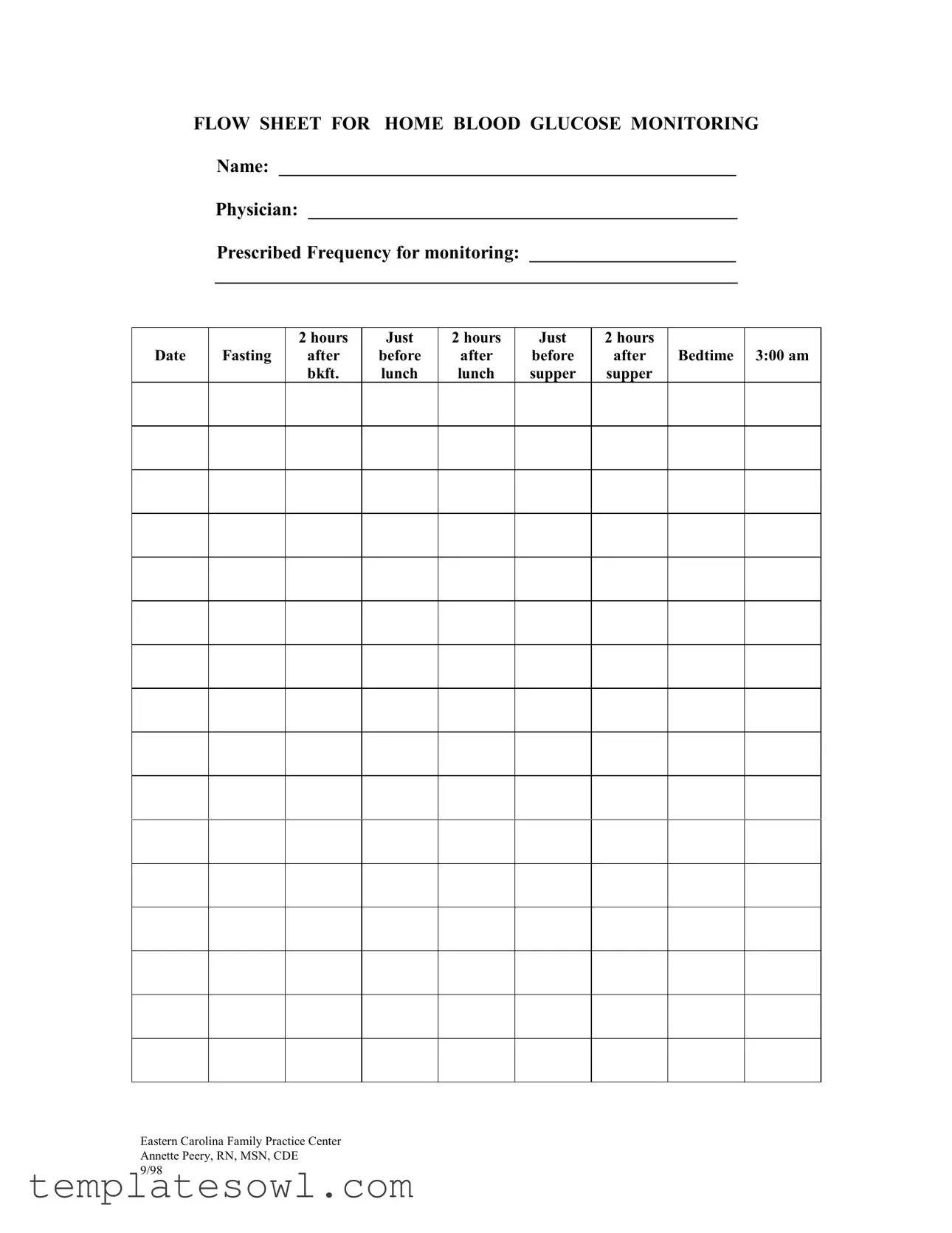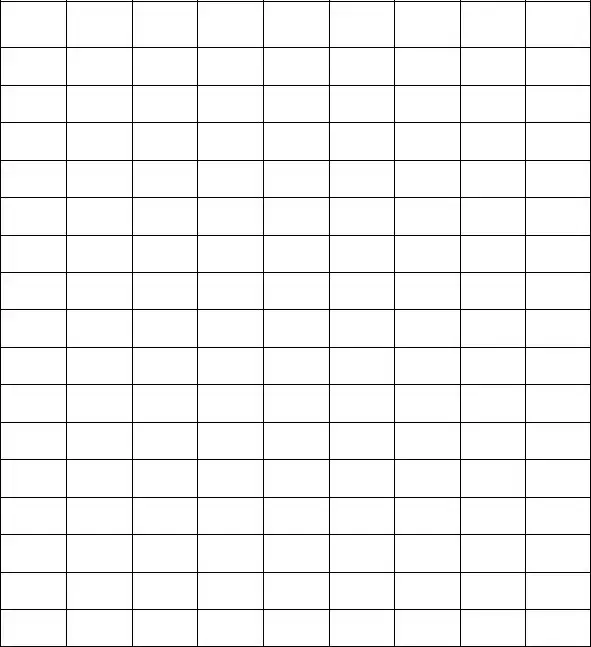What is the Blood Glucose Monitoring form used for?
The Blood Glucose Monitoring form is designed to help individuals track their blood glucose levels at specified times throughout the day. Monitoring these levels is important for people managing diabetes or other health conditions that affect blood sugar. By recording these values regularly, both patients and healthcare providers can better assess how well the blood sugar is being controlled.
Who should fill out this form?
This form should be filled out by individuals who have been prescribed blood glucose monitoring by their physician. It's particularly helpful for patients with diabetes or those undergoing treatment that requires regular monitoring of blood sugar levels. Family members or caretakers may assist in filling it out, especially for individuals who may have difficulty doing so themselves.
What information do I need to provide on the form?
You will need to fill in your name, the name of your physician, and the prescribed frequency for monitoring your blood glucose. This may include how often you need to check your blood sugar each day. Additionally, you will record your blood glucose levels at various times, such as fasting and after meals.
How often should I monitor my blood glucose?
The frequency for monitoring blood glucose can vary based on individual needs and the advice of your healthcare provider. Generally, the form includes spaces for daily checks, such as fasting, before and after meals, and at bedtime. Follow the specific instructions provided by your physician for personalized guidance.
What do the different time slots on the form signify?
The Blood Glucose Monitoring form includes time slots for recording levels at different intervals: fasting, 2 hours after breakfast, just before lunch, 2 hours after lunch, just before supper, 2 hours after supper, and bedtime. These intervals help you and your healthcare provider understand how your blood sugar fluctuates throughout the day and how it may respond to food intake or medication.
What should I do if I forget to fill out the form?
If you forget to fill out the form, try to record your levels as soon as you remember. It's important not to skip entries, as consistent data is crucial for effective management of your blood glucose. If you miss multiple entries, it may be helpful to discuss your monitoring routine with your healthcare provider.
How can I ensure I am using the form effectively?
To use the form effectively, make a habit of checking your blood glucose at the prescribed times and recording the results immediately. This practice not only enhances accuracy but also makes it easier to track patterns over time. Regular review of the completed form with your healthcare provider can further optimize your blood sugar management approach.

